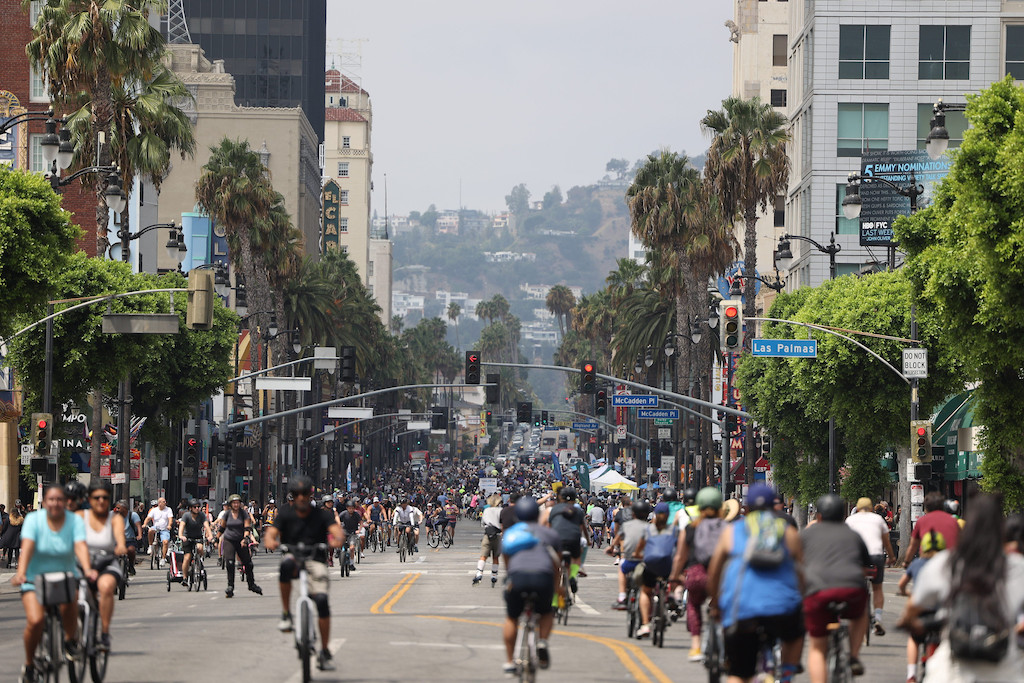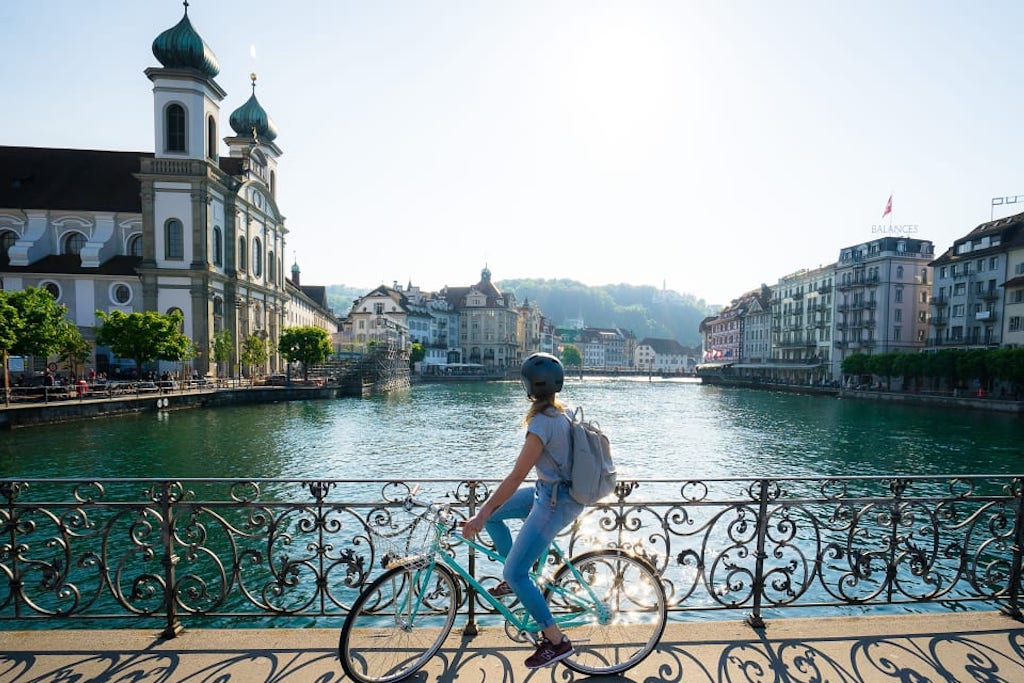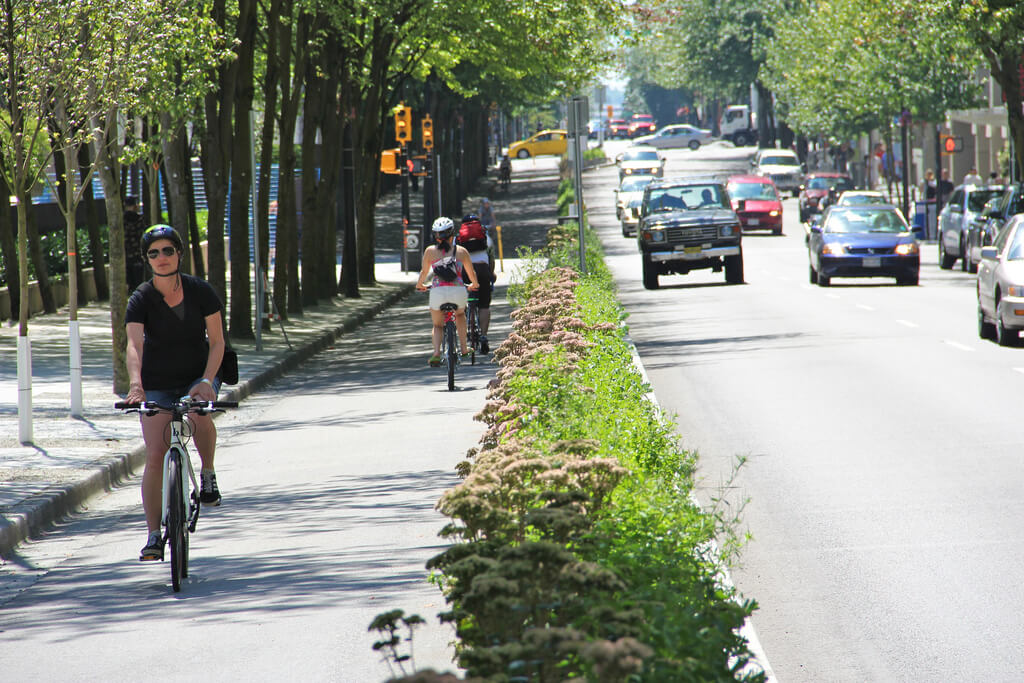Autumn Gear Guide
Find inspiration in our Gear Guide that will keep you out on your bike through wind or rain.
Download NowA bicycle-friendly city is one where bikes are not just a mode of transportation or recreation but an integral part of the urban fabric. But what exactly makes a city truly cycle-friendly? It’s a combination of infrastructure, culture, policies, and community spirit. Here’s a comprehensive guide to what makes a city a cycling city and […]
A bicycle-friendly city is one where bikes are not just a mode of transportation or recreation but an integral part of the urban fabric. But what exactly makes a city truly cycle-friendly? It’s a combination of infrastructure, culture, policies, and community spirit. Here’s a comprehensive guide to what makes a city a cycling city and how urban areas can achieve this ideal.
Bike Lanes and Paths: A bicycle-friendly city has well-designed, dedicated bike lanes and paths ensures cyclists can travel safely and efficiently. Protected bike lanes, separated from car traffic, are particularly effective in reducing accidents and encouraging cycling.
Bike Parking: Ample, secure bike parking facilities are crucial. This includes bike racks, parking garages, and bike-share stations that are conveniently located throughout the city. For examples of some of the worst bike lanes in the world go here.
Bike-Friendly Traffic Signals: Traffic signals that accommodate cyclists, such as bike boxes at intersections and dedicated signal phases, enhance safety and ease of travel.
Repair Stations and Maintenance Facilities: Providing public repair stations and maintenance facilities encourages cycling by ensuring that minor bike issues can be addressed easily.
Community Events and Rides: Regular cycling events, like group rides, races, and festivals, foster a vibrant cycling community and raise awareness about cycling as a lifestyle choice. A great example of a community event is the CicLAvia series in Los Angeles.
Bike Advocacy Groups: Active local cycling advocacy groups play a crucial role in promoting cycling, organizing events, and working with city officials to improve cycling infrastructure.
Public Perception: In a bicycle-friendly city, biking is viewed positively as a normal, even preferred, mode of transportation. This cultural acceptance helps normalize cycling and encourage more people to choose it.

CicLAvia in Los Angeles
Bike-Share Programs: Accessible and affordable bike-share programs make it easy for residents and visitors to use bikes for short trips and reduce reliance on cars.
Incentives for Cycling: Programs that offer incentives for cycling, such as tax breaks, subsidies for bike purchases, or rewards for frequent riders, can encourage more people to take up cycling.
Cyclist Safety Laws: Laws that protect cyclists, such as mandatory helmet laws, safe passing regulations, and strict enforcement of traffic rules, contribute to a safer cycling environment.
Integration with Public Transport: Easy integration between bikes and public transportation systems, such as allowing bikes on trains and buses, helps extend the reach of cycling trips.
Compact Urban Layout: A compact city layout with mixed-use neighborhoods makes cycling more practical and enjoyable, as destinations are closer together and easier to reach by bike.
Traffic Calming Measures: Implementing traffic calming measures, such as lower speed limits and pedestrian zones, creates a safer environment for cyclists and reduces conflicts between cars and bikes.
Green Spaces and Scenic Routes: Incorporating green spaces and scenic bike routes into urban planning enhances the appeal of cycling and encourages people to choose bikes for leisure and commuting.

Lakes Route in Switzerland (photo: Switzerland Tourism)
Cycling Education Programs: Providing education and training for new cyclists, including bike handling skills and road safety, helps build confidence and promotes responsible riding.
Awareness Campaigns: Public awareness campaigns that highlight the benefits of cycling, address misconceptions, and showcase cycling as a viable transportation option can drive cultural change and increase cycling rates.
School Programs: Encouraging cycling through school programs and initiatives helps instill a cycling culture in the younger generation and promotes safe biking habits from an early age.
Inclusive Design: Ensuring that cycling infrastructure and programs are accessible to people of all ages and abilities, including those with disabilities, helps create a more inclusive cycling environment.
Affordability: Making cycling affordable through subsidies, low-cost bike-share options, and accessible repair services helps remove economic barriers to biking.
Safety for All: Addressing safety concerns for diverse groups of cyclists, including children, elderly riders, and women, ensures that everyone can enjoy the benefits of cycling.

A planter-box buffer protects Vancouver’s Hornby Street bike lane from vehicle traffic. Photo by Paul Krueger.
By focusing on these key elements and following a comprehensive plan, cities can transform into vibrant cycling hubs that promote health, sustainability, and a high quality of life for all residents.
Find inspiration in our Gear Guide that will keep you out on your bike through wind or rain.
Download Now


Leave a comment